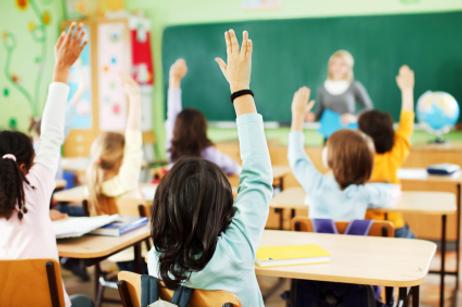With recent budgetary issues and decreased funding for public schools, many administrators are being forced to cut teaching positions for the upcoming school year. The loss of teachers means that nearly all students will be forced into a larger class size in the future. Will your child be prepared to successfully handle the change?
Lower Budgets and Larger Classes
As all public schools cope with the loss of funds, leaders must make difficult balancing decisions. Most controversially, many school leaders are being forced to cut teaching positions to keep their schools running.
As the population of students stays the same and the number of teachers declines, students are being shuffled into larger classes with less personal time with each instructor. Los Angeles, for example, is one of the leading examples of a city facing a budget and job cut crisis. As NPR reports, Los Angeles’ Board of Education recently voted to cut thousands of public school jobs, including both teachers and support staff members. With an estimated 600 million dollar deficit, the school leaders assert that public schools must let teachers go at the cost of larger class sizes.
This TED Talk explores why our schools are failing.
Will Your Child Succeed?
As the average public school class size has changed dramatically over the past several decades, experts are still debating the impact of class size on a student’s learning potential. As explicated in the News with Views analysis, “Surprise – Public School Class Size Doesn’t Matter,” some assert that although common sense leads people to believe that smaller classes are better, statistics prove the contrary. According to reports, the average student-to-teacher ratio in the mid-1960s was approximately 24 to 1. By the mid-1990s, the ratio dropped to 17 to 1. Comparing these periods, although class sizes had decreased by 28 percent, studies show that students’ SAT scores fell from around 954 to 896. This drop reveals an overall decline of 6 percent, despite the smaller class sizes!
On the other hand, many argue that smaller class sizes foster enhanced holistic student development. With a smaller teacher-to-student ratio, students can spend more one-on-one time with their teacher, and the instructor can personalize their instruction more effectively for diverse learning styles. Additionally, although studies show that SAT scores dropped as class sizes decreased, many assert that the SAT has changed its format over the past several decades, making it an uncontrolled variable in the analysis. It is possible that students in the mid-'90s were faced with more difficult testing questions and materials; as a result, their scores may have subsequently declined due to the rigor of the assessments – not due to the alterations of instruction.
School leaders are relatively unsure about whether or not your child will succeed in the upcoming school changes. While most assert that children will be able to adjust to somewhat larger class sizes, many parents are concerned that their child will lack individual attention in class.
While the increase in class sizes will vary, depending on each school’s projected budget, parents should know that in the case of school job cuts, teachers are not the only positions being shed. Larger class sizes also mean less administrative support. As evident in the Los Angeles public schools, many administrators are also being laid-off, forcing some administrators to cut back and readjust their shared leadership and management duties. With this possibility, parents may need to keep a closer watch on their child’s academic performance, as well as their child’s behavioral performance.
This video offers a teacher's perspective on class sizes.
Larger Class Alternatives
While nearly all public schools are struggling to balance their budgets, some districts have found alternatives to implementing larger classes and fewer teachers. Specifically, one Chicago Public School high school has created a new scheduling approach that will maintain smaller class sizes while also allowing teachers to educate more children.
After the district closed several public schools in recent years, Chicago’s Lockport Township High School has created a staggered schedule to provide fair and balanced educational opportunities for its 4,000 students.
Between two campuses, 800 juniors and seniors will begin their classes at 6:44 am. With an earlier start, many seniors can choose to end their school day as early as 11:45 am, while juniors may be eligible to end their school day at 1:44 pm. As these 800 students leave campus, the remaining sophomores and freshmen remain in class until 3:44 pm. As a result, these schools have maintained their smaller class sizes without sacrificing jobs, layoffs, or unfortunate cuts.
While the jury is out regarding the true impact of larger class sizes on a student’s performance, staying close to your child and remaining actively involved in their academic career can help your student transition to new class size.
Questions? Contact us on Facebook. @publicschoolreview











